

Articles
How To Store An Acoustic Guitar
Modified: February 22, 2024
Learn the best tips and techniques for storing your acoustic guitar properly. Check out our informative articles for step-by-step instructions and expert advice
(Many of the links in this article redirect to a specific reviewed product. Your purchase of these products through affiliate links helps to generate commission for Storables.com, at no extra cost. Learn more)
Introduction
As an acoustic guitar owner, it is important to know how to properly store your instrument to ensure its longevity and optimal playability. Whether you are a professional musician or a casual player, following the right storage techniques will protect your guitar from damage caused by environmental factors like temperature, humidity, and physical mishaps.
In this article, we will discuss a step-by-step guide on how to store an acoustic guitar properly. By following these guidelines, you can safeguard your instrument and maintain its quality for years to come.
So, let’s dive in and discover the best practices for storing your acoustic guitar!
Key Takeaways:
- Properly storing an acoustic guitar involves choosing the right location, cleaning and protecting the instrument, and maintaining a moderate temperature and humidity environment to ensure its longevity and optimal playability.
- Regularly checking and maintaining your acoustic guitar, even during storage, ensures that it remains in optimal condition and is ready for you to play whenever you desire.
Read more: How To Store Acoustic Guitar
Step 1: Choose the right storage location
Choosing the right storage location for your acoustic guitar is crucial to its overall well-being. You want to find a space that is clean, dry, and away from potential hazards. Here are some factors to consider when selecting a storage spot:
- Temperature: Avoid extremes in temperature, such as areas near heating vents or direct sunlight. Fluctuations in temperature can cause the wood to expand and contract, potentially warping the neck or damaging the finish of the guitar.
- Humidity: Moisture is the enemy of acoustic guitars. High humidity can lead to swelling and warping, while low humidity can result in shrinking and cracking of the wood. Aim for a humidity level between 40% and 50%. You can use a hygrometer to monitor the humidity in the storage area.
- Protection from accidents: Avoid storing your guitar in an area where it is prone to accidental bumps, falls, or spills. Keep it far away from busy walkways, active children, or pets.
- Cleanliness: Choose a storage spot that is free from dust, dirt, and excessive moisture. Clean the area regularly to prevent any buildup of particles that could potentially harm the instrument.
Consider these factors when selecting an appropriate storage location for your acoustic guitar. By finding a space that meets these criteria, you can provide a safe and suitable environment for your instrument.
Step 2: Clean and protect your guitar
Before storing your acoustic guitar, it is essential to clean and protect it properly. This ensures that no dirt, oils, or residue are left on the instrument that may cause damage or affect its playability. Here are some steps to follow:
- Clean the body: Use a soft, lint-free cloth to gently wipe the body of the guitar. Pay close attention to removing any fingerprints, oils, or dirt that may have accumulated. Avoid using abrasive cleaners or solvents that could harm the finish of the instrument.
- Clean the fretboard: The fretboard can accumulate dirt and grime over time, affecting the playability of your guitar. Use a clean, damp cloth to wipe the fretboard gently. If there is stubborn dirt or residue, use a small amount of lemon oil specifically designed for guitar fretboards to clean and condition it.
- Polish the guitar: If desired, you can apply a high-quality guitar polish to give the body of the guitar a beautiful shine. Make sure to choose a polish that is safe for the type of finish on your guitar and follow the instructions on the packaging.
- Protect the guitar: Once the guitar is clean, it is important to protect it from scratches and other potential damage during storage. Consider using a soft guitar case or a hardshell case with padded interiors to provide a secure and cushioned environment for your instrument. Avoid storing your guitar in a room with excessive moisture, as this can cause damage to the wood and finish.
By cleaning and protecting your guitar before storage, you ensure that it remains in excellent condition and ready to play when you retrieve it.
Step 3: Loosen the guitar strings
Loosening the strings of your acoustic guitar before storing it is an important step to prevent unnecessary tension and potential damage. When the strings are under constant tension for extended periods, it can cause them to lose their elasticity, potentially leading to string breakage or negatively affecting the neck’s curvature. Here’s how to loosen the guitar strings:
- Tune down the strings: Use a reliable guitar tuner to tune down each string of the guitar. Start with the low E string and gradually work your way up to the high E string. Tune the strings down a whole step or two, which means lowering the pitch of each string by two frets.
- Ensure proper tension: Make sure the strings are evenly and moderately loosened. The goal is to reduce the tension on the guitar neck without completely slackening the strings. Be careful not to loosen the strings too much, as this can cause the truss rod to overcompensate and affect the neck’s curvature.
- Check for string buzz: After loosening the strings, gently strum each one and listen for any buzzing or excessive vibrations. If you notice any string buzz, you may need to fine-tune the tension to achieve a balance between relieving stress on the neck and maintaining proper string height.
- Secure the strings: Once the strings are properly loosened, you can wrap them around the headstock to keep them in place. This prevents the strings from flopping around inside the case or getting tangled with other parts of the guitar during storage.
By loosening the guitar strings, you relieve the tension on the neck and reduce the risk of damage during storage. Remember to carefully tune your guitar back to its standard tuning before playing it again.
Step 4: Remove any additional accessories
Before storing your acoustic guitar, it’s important to remove any additional accessories that may be attached or stored with the instrument. While accessories such as capos, straps, or tuners are useful during playing, they can potentially cause damage if left on the guitar during storage. Here’s what you need to do:
- Remove the capo: If you have a capo attached to your guitar, carefully remove it and place it in a designated storage space. Leaving the capo on can exert unnecessary pressure on the strings, potentially affecting their tension and causing damage over time.
- Detach the guitar strap: If you have a strap attached to your guitar, unhook it from the strap buttons or other attachment points. Storing the guitar without the strap prevents it from accidentally getting hooked on something and causing damage, especially if it’s kept in a case or a tight storage space.
- Take off any external pickups: If you use an external soundhole pickup or any other type of removable pickup on your acoustic guitar, remove it before storage. This ensures that the pickup does not put unnecessary pressure on the guitar’s top or cause any damage when the guitar is not being used.
- Store accessories separately: Once the accessories are removed, find a safe and organized place to store them separately from the guitar. This ensures that they are easily accessible when you need them and reduces the risk of them causing any harm to your instrument.
By removing any additional accessories from your acoustic guitar before storage, you minimize the risk of them causing damage to the instrument or interfering with its proper storage and protection.
Read more: How To Store A Guitar
Step 5: Place a cushion or padding inside the case
When storing your acoustic guitar inside a case, it’s essential to provide additional cushioning and padding to protect it from potential bumps or shocks. Adding a cushion or padding inside the case helps create a secure and stable environment for your instrument. Follow these steps to ensure proper cushioning:
- Select the right padding material: Look for soft and non-abrasive materials that provide adequate cushioning. Options like foam padding, microfiber cloths, or even old t-shirts can work well to provide a protective layer for your guitar.
- Cover the bottom of the case: Place a layer of padding at the bottom of the guitar case to create a soft surface for the guitar to rest on. Ensure that the padding is evenly distributed and covers the entire bottom area of the case.
- Protect the sides and neck: Cut additional pieces of padding and place them on the sides of the guitar case, so they surround the body and neck of the instrument. This added layer of cushioning helps stabilize the guitar inside the case and prevents any movement or potential damage.
- Avoid excess pressure: When adding padding, be careful not to put excessive pressure on the guitar, as this can affect its shape or expose it to unnecessary stress. The padding should provide support and protection without squeezing or pressing too tightly against the instrument.
By adding the right cushioning and padding inside the guitar case, you create a secure and gentle environment for your acoustic guitar during storage. This helps minimize the risk of any accidental bumps or shocks that could potentially damage the instrument.
Store your acoustic guitar in a hard case or a humidity-controlled environment to protect it from damage. Keep it away from direct sunlight and extreme temperatures.
Step 6: Place the guitar inside the case
Now that you have prepared the case with the necessary cushioning and padding, it’s time to carefully place your acoustic guitar inside the case. Follow these steps to ensure a secure and proper fit:
- Open the case: Open the guitar case fully, ensuring that the latches are undone and the lid is propped open.
- Position the guitar: Hold your acoustic guitar with caution, supporting the neck and body securely. Gently lower the guitar into the case, aligning the neck with the case’s neck rest or support.
- Center the guitar: Position the guitar in the center of the case, ensuring that it is not leaning on any side or pressing against the inner walls. The instrument should be well-centered and balanced within the case.
- Check the clearance: Ensure that there is a reasonable amount of clearance between the guitar and the case lid. The strings and headstock should not touch the lid when closed, as this can cause unnecessary pressure and potential damage.
- Double-check the placement: Once the guitar is inside the case, take a moment to double-check its positioning. Make sure it is secure, stable, and well-supported by the cushioning and padding.
By properly placing your acoustic guitar inside the case, you ensure that it is protected and securely stored. Take care to position the instrument in a way that minimizes any potential movement or pressure during storage.
Step 7: Secure the case properly
After placing your acoustic guitar inside the case, it’s crucial to secure the case properly to ensure the instrument remains safe and protected during storage. Follow these steps to secure the case:
- Close the latches: Close all the latches on the guitar case securely. Ensure that they are properly aligned and engaged, providing a tight seal. This helps prevent any accidental opening or movement of the case.
- Test the closure: Once the latches are closed, gently press down on the case lid to ensure that it is fully closed and sealed. If there is any resistance or movement, check the latches again to ensure they are properly secured.
- Lock the case if available: If your guitar case comes with a lock or has the provision for one, consider using it. Locking the case adds an extra layer of security and helps prevent unauthorized access or tampering with your instrument.
- Store the case upright: When storing the guitar case, make sure to store it in an upright position. This prevents any unnecessary pressure on the instrument inside and reduces the risk of the case toppling over or being damaged.
- Protective cover or bag: If you live in an area with high dust levels or if you anticipate a longer storage period, consider placing a protective cover or a guitar bag over the guitar case. This provides an additional layer of protection from dust, dirt, and potential scratches.
By properly securing the case, you ensure that your acoustic guitar is well-protected and less susceptible to any external elements or accidental damage during storage. Take the time to double-check the closure and use any available locking mechanisms for added peace of mind.
Step 8: Store the guitar in a moderate temperature and humidity environment
The storage environment plays a crucial role in preserving the condition of your acoustic guitar. Extremes in temperature and humidity can cause significant damage to the instrument, affecting its sound quality and structural integrity. Follow these steps to ensure a moderate storage environment:
- Temperature control: Avoid storing your guitar in areas that are subjected to extreme temperature fluctuations. Ideally, choose a location with a moderate temperature, such as a room with stable heating and cooling. Extremes of heat or cold can cause the wood to expand and contract, potentially leading to cracks or warping.
- Humidity control: Maintaining the right humidity level is crucial for the well-being of your acoustic guitar. High humidity can cause the wood to swell and potentially lead to mold growth, while low humidity can result in the wood drying out and shrinking. Aim for a humidity level between 40% and 50%. You can use a hygrometer to monitor the humidity of the storage area and use a humidifier or dehumidifier to adjust it if necessary.
- Avoid exposure to direct sunlight: Exposing your guitar to direct sunlight can have detrimental effects on its finish and overall condition. The UV rays can fade the color and cause the wood to dry out. Choose a storage spot away from windows or use curtains or blinds to block direct sunlight.
- Avoid areas prone to dampness: Dampness can lead to mold growth and cause significant damage to your guitar. Avoid storing the instrument in basements, attics, or any area prone to leaks or excessive moisture. If you live in a particularly humid or damp environment, consider using dehumidifiers or moisture-absorbent materials, such as silica gel packets, to control the humidity levels.
- Consistent environment: Maintain a consistent temperature and humidity level throughout the storage period. Drastic changes in environmental conditions can cause stress on the guitar and potentially lead to damage. Make sure the storage area is well-insulated and sealed to minimize any external influences.
By storing your acoustic guitar in a moderate temperature and humidity environment, you protect it from potential damage caused by extreme conditions. A consistent and controlled environment ensures the longevity and optimal performance of your instrument.
Read more: How To Store Guitars
Step 9: Regularly check and maintain your guitar
Even when your acoustic guitar is in storage, it is important to regularly check and maintain it to ensure its long-term health and playability. Here are some steps to follow:
- Inspect the guitar: Periodically inspect your guitar for any signs of damage, wear, or changes in its condition. Look for cracks, loose hardware, or any other issues that may have occurred during storage.
- Re-tune the strings: Over time, the guitar strings may gradually lose their tension, even when they are loosened. Regularly re-tune the strings to their proper pitch to prevent any potential issues when you decide to play the guitar again.
- Clean the guitar: Dust, dirt, and other particles may accumulate on the guitar even when it is in storage. Use a soft, lint-free cloth to wipe down the body, fretboard, and any other exposed surfaces. Avoid using any cleaners or solvents that could damage the finish of the instrument.
- Check the humidity: Monitor the humidity levels in the storage area and ensure they remain within the recommended range. Make any necessary adjustments using humidifiers or dehumidifiers to maintain a stable humidity level that protects the wood and prevents any potential damage.
- Re-cushion if necessary: Over time, the padding and cushioning inside the case may lose their effectiveness or become compressed. If you notice any signs of wear or if the guitar seems less secure inside the case, consider replacing or adding additional cushioning to ensure proper protection.
- Play the guitar: Every now and then, take the opportunity to play your guitar while it is in storage. This helps to keep the wood and strings in good condition and prevents them from becoming too accustomed to the static storage environment.
Regularly checking and maintaining your acoustic guitar, even during storage, ensures that it remains in optimal condition and is ready for you to play whenever you desire. By following these maintenance steps, you can extend the life of your instrument and preserve its quality.
Conclusion
Properly storing an acoustic guitar is essential for preserving its longevity, playability, and overall condition. By following the step-by-step guide outlined in this article, you can ensure that your instrument remains well-protected, even during periods of storage.
Remember to choose the right storage location, one that provides moderate temperatures, humidity control, and protection against accidents. It’s important to clean and protect your guitar before storing it, ensuring that it is free from dirt and residue that could cause damage. Loosening the strings and removing any additional accessories help relieve tension and prevent potential harm.
Placing the guitar inside a case with proper cushioning and padding creates a secure and stable environment. Ensure the case is properly closed, secured, and stored upright to minimize any risks. Store the guitar in a moderate temperature and humidity environment, avoiding exposure to direct sunlight or areas with excessive dampness.
Lastly, regularly check and maintain your guitar, even during storage. Inspect it for any damage, re-tune the strings periodically, clean the guitar surfaces, and monitor the humidity levels in the storage area.
By following these guidelines, you can ensure that your acoustic guitar remains in excellent condition and ready to be enjoyed whenever you decide to play. Storing your guitar properly not only helps maintain its value but also ensures that it will continue to bring you joy for years to come.
Frequently Asked Questions about How To Store An Acoustic Guitar
Was this page helpful?
At Storables.com, we guarantee accurate and reliable information. Our content, validated by Expert Board Contributors, is crafted following stringent Editorial Policies. We're committed to providing you with well-researched, expert-backed insights for all your informational needs.
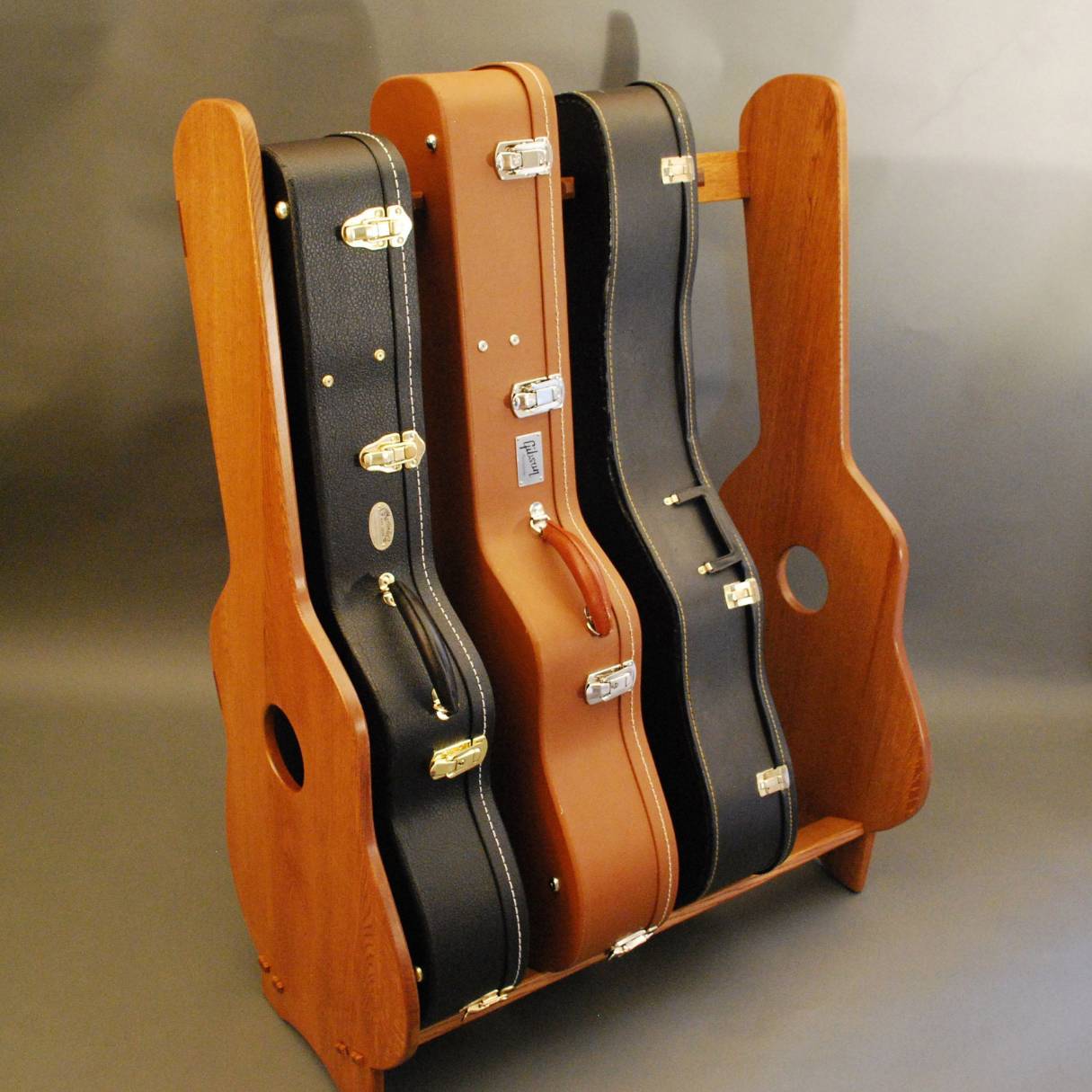
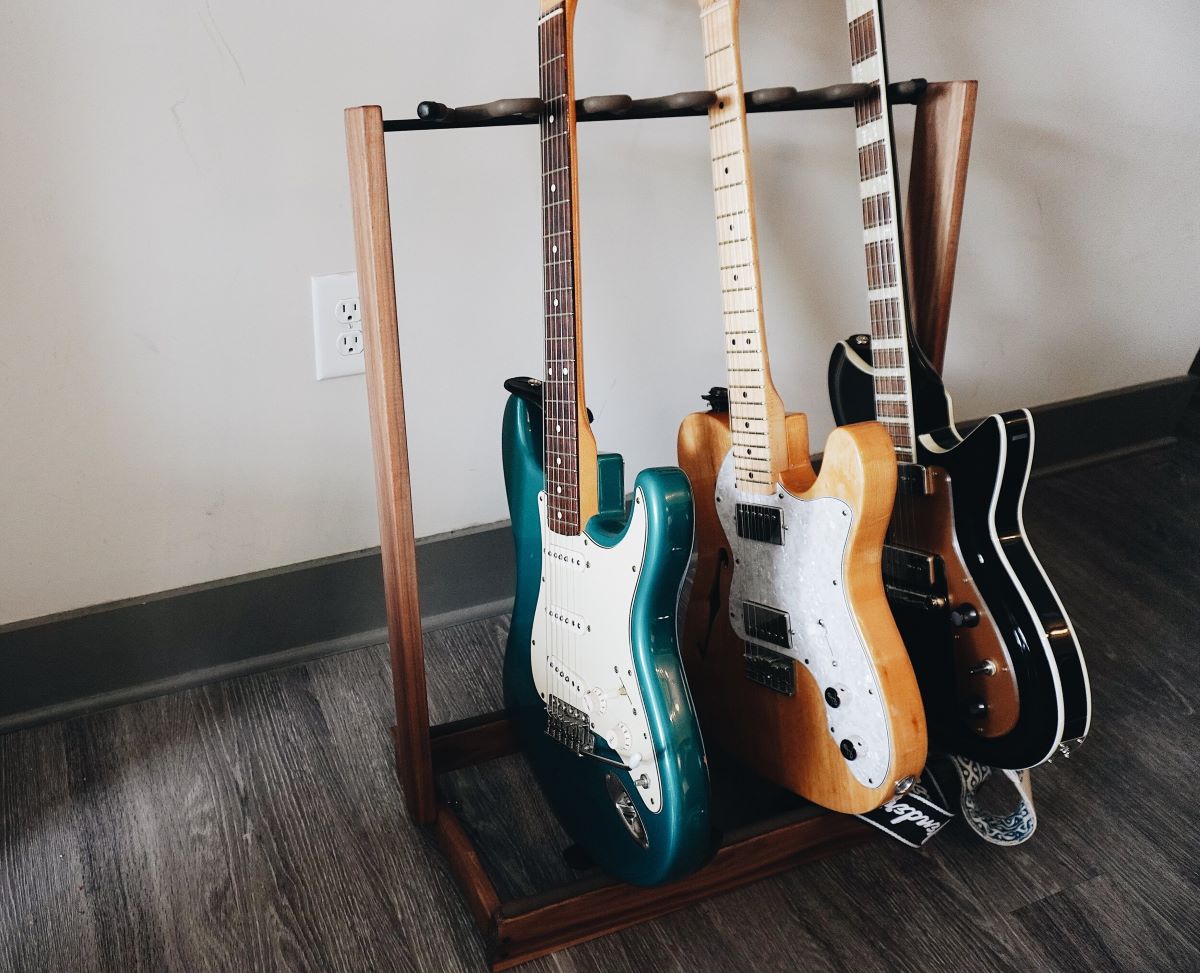

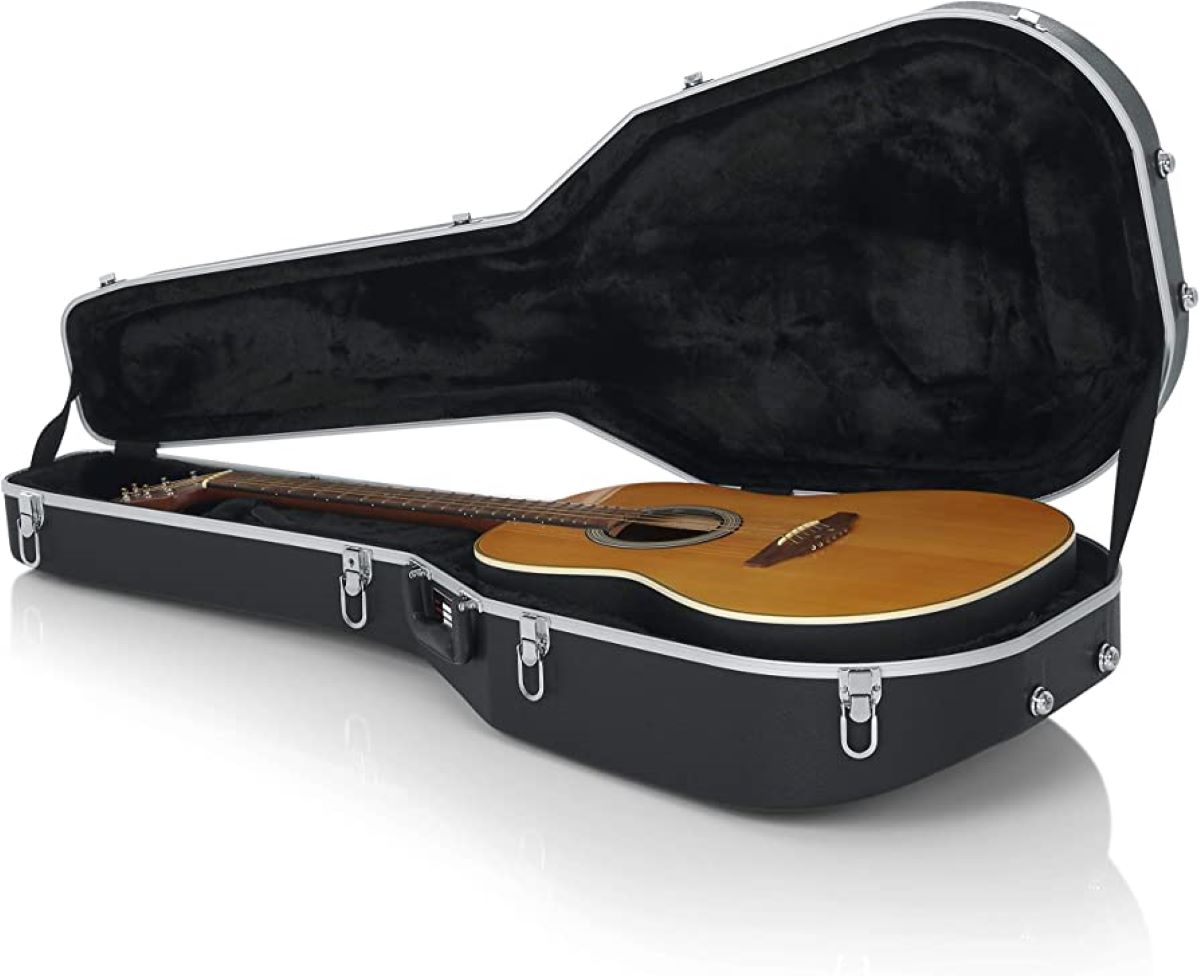


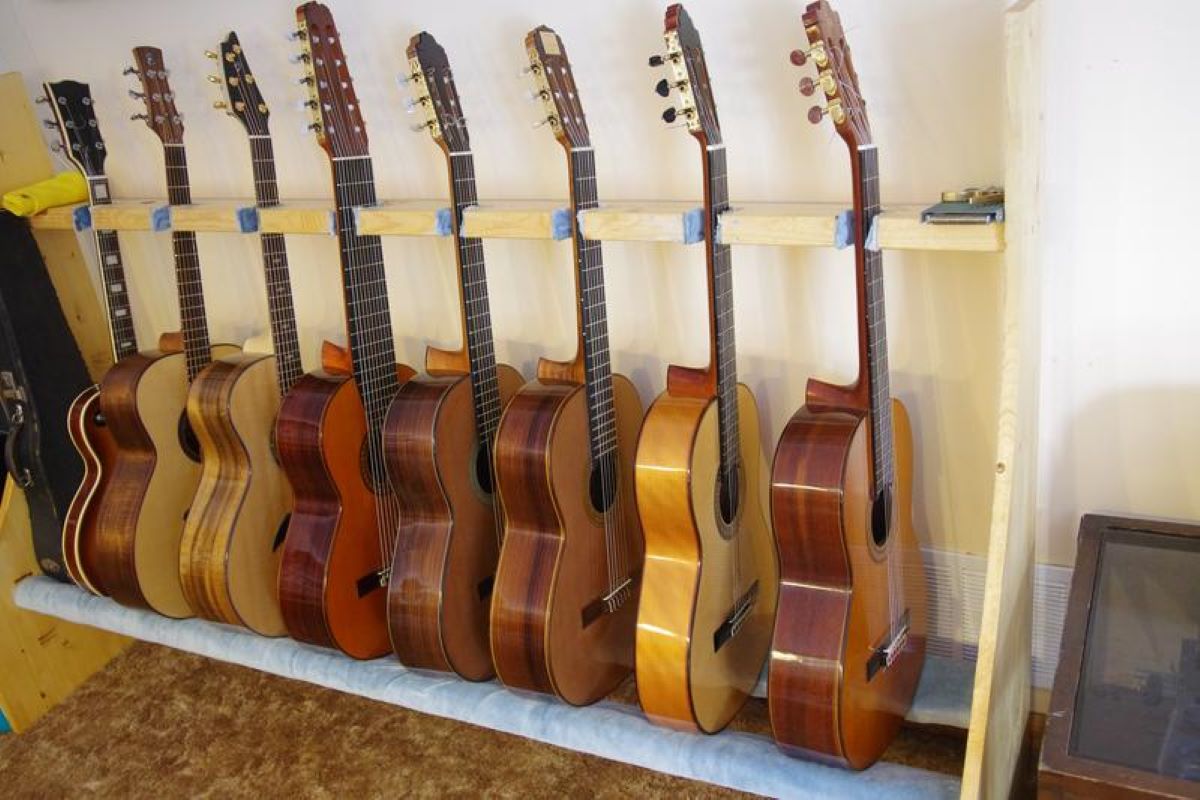
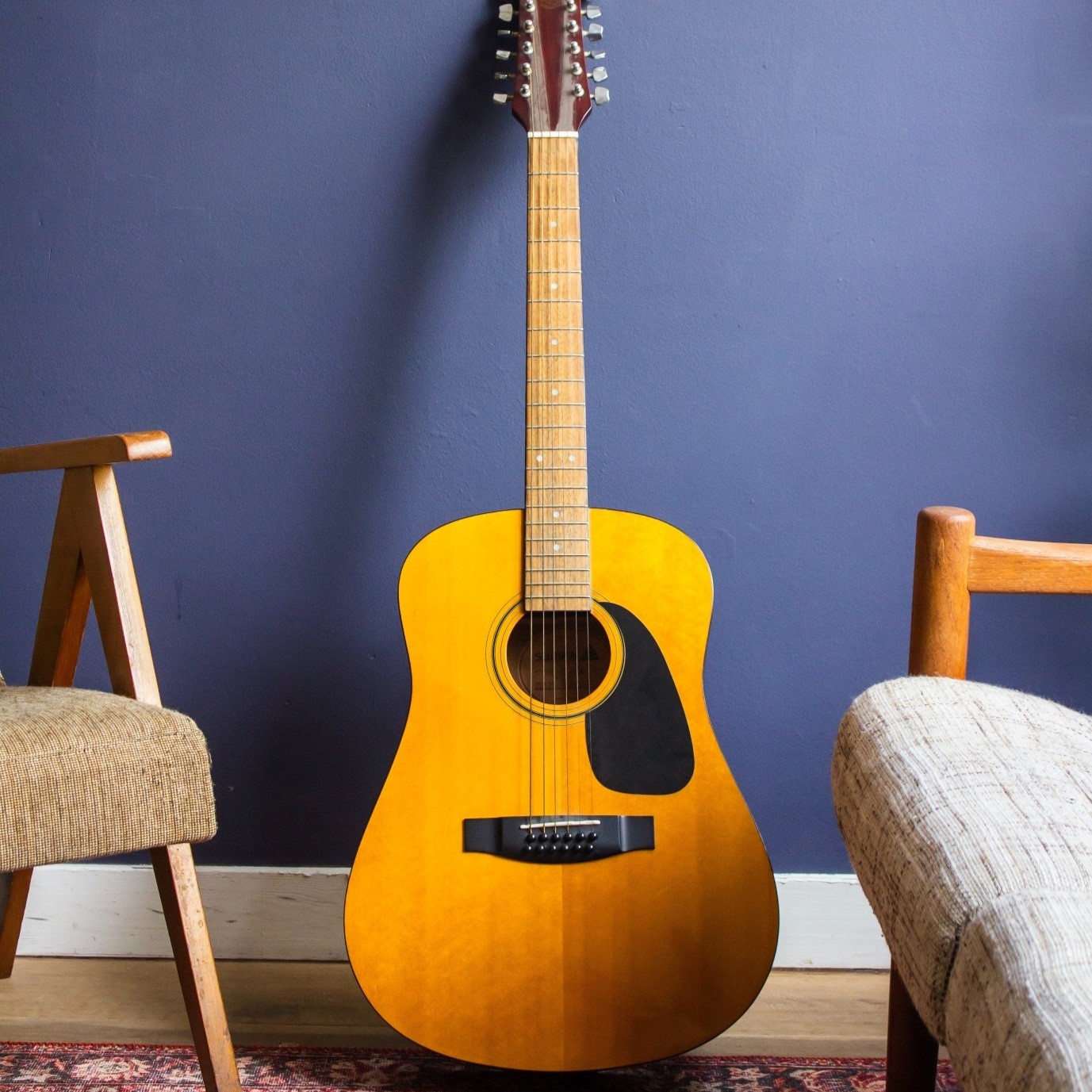






0 thoughts on “How To Store An Acoustic Guitar”